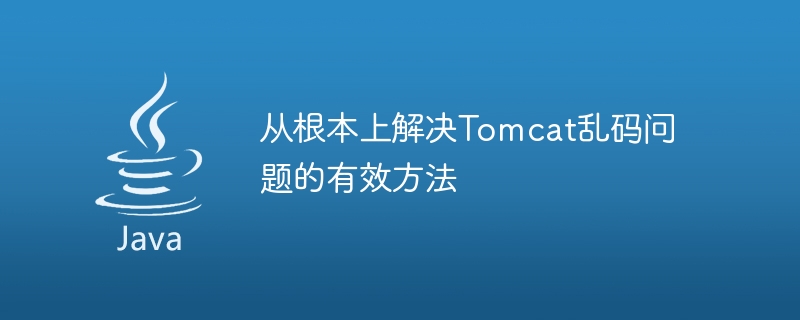

An effective method to fundamentally solve the Tomcat garbled problem requires specific code examples
Introduction:
In the process of Web development, character encoding is often encountered problem, one of the common problems is Tomcat garbled code problem. Tomcat garbled problems often appear in request parameters and response results, bringing a bad experience to users. This article will introduce some effective methods to solve the Tomcat garbled problem and provide specific code examples to help developers better solve such problems.
1. Set the Tomcat server.xml file
First, make sure that the Connector in Tomcat's server.xml file is set correctly. Set URIEncoding to UTF-8 in the Connector, as shown below:
This setting ensures that Tomcat correctly encodes and decodes the request parameters in the URL.
2. Set the request parameter encoding
In the code of the web application, we can avoid the garbled problem by setting the encoding method of the request parameter. A common method is to manually specify the encoding method of the request parameters by setting the request.setCharacterEncoding() method, as shown below:
protected void doPost(HttpServletRequest request, HttpServletResponse response) throws ServletException, IOException { request.setCharacterEncoding("UTF-8"); //处理请求,编码方式为UTF-8 }
In this example, we set the encoding method of the request parameters to UTF- 8, to ensure that request parameters are parsed correctly.
3. Set the response result encoding
In addition to setting the request parameter encoding, we also need to set the response result encoding method to ensure that the data returned to the client is displayed correctly. Specify the encoding method of the response result by setting the response.setContentType() and response.setCharacterEncoding() methods. The example is as follows:
protected void doGet(HttpServletRequest request, HttpServletResponse response) throws ServletException, IOException { response.setContentType("text/html;charset=UTF-8"); response.setCharacterEncoding("UTF-8"); PrintWriter out = response.getWriter(); out.println("欢迎使用Tomcat乱码问题解决方法示例!"); //其他响应结果的处理 out.close(); }
In this example, we set the content type of the response result to "text/html ;charset=UTF-8" and set the encoding to UTF-8 to ensure correct display of the response results.
4. Use filters to uniformly process encoding methods
In order to avoid manually setting the encoding method in each Servlet, we can use filters to uniformly process encoding methods. Create an encoding filter, as shown below:
public class EncodingFilter implements Filter { private String encoding; public void init(FilterConfig config) throws ServletException { encoding = config.getInitParameter("encoding"); } public void doFilter(ServletRequest request, ServletResponse response, FilterChain chain) throws IOException, ServletException { request.setCharacterEncoding(encoding); response.setContentType("text/html;charset=" + encoding); response.setCharacterEncoding(encoding); chain.doFilter(request, response); } public void destroy() { encoding = null; } }
Configure the filter in the web.xml file, as shown below:
EncodingFilter com.example.EncodingFilter encoding UTF-8 EncodingFilter /*
In this way, the request parameters and Response results are coded in a way that avoids duplication of code.
Conclusion:
The Tomcat garbled problem is a common problem in Web development. We can handle it uniformly by setting the Tomcat server.xml file, manually setting the request parameters and response result encoding methods, and using filters. Coding methods and other methods to solve this problem. In actual development, it is necessary to choose the appropriate method to solve the garbled problem according to the specific situation. In the code examples, we use UTF-8 encoding as an example. In actual development, you may need to choose an appropriate encoding method based on specific business needs. By correctly handling the Tomcat garbled problem, you can provide users with a better user experience.
The above is the detailed content of The fundamental method to effectively solve the Tomcat garbled problem. For more information, please follow other related articles on the PHP Chinese website!




